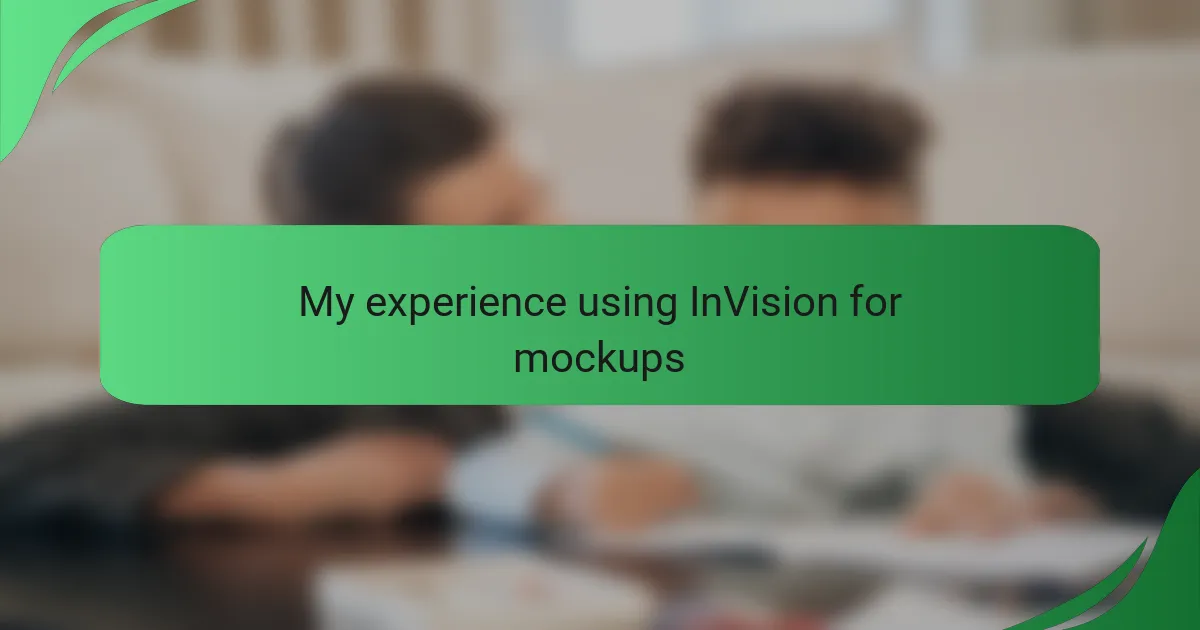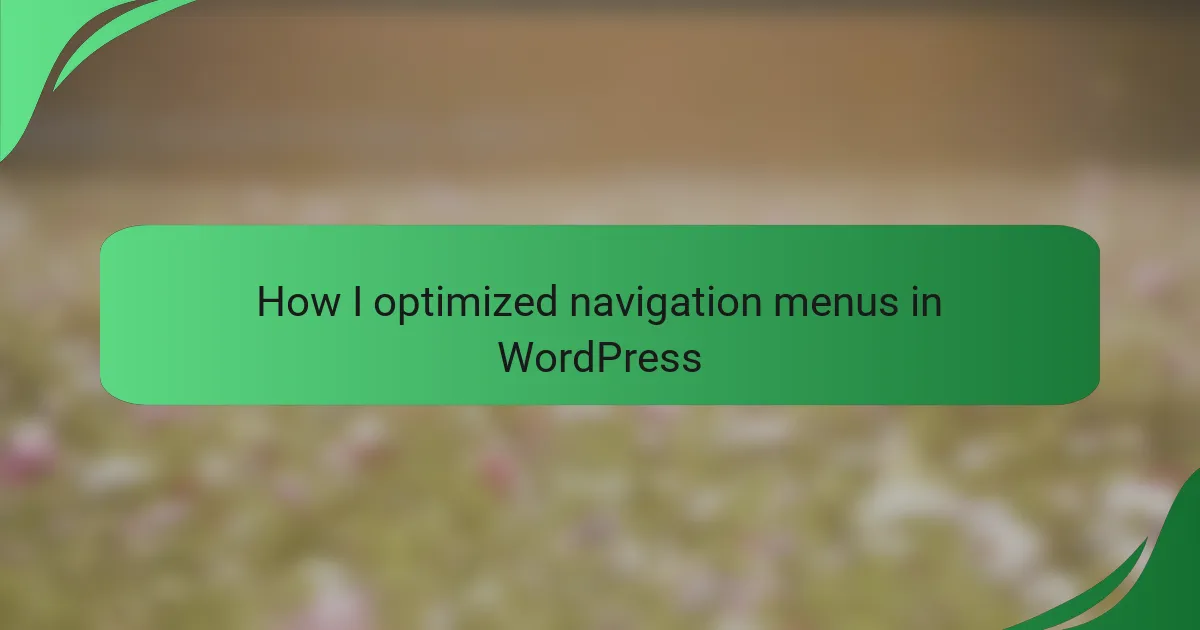Key takeaways
- Effective interface interaction design focuses on user needs, ensuring tasks are intuitive and accessible.
- Collaboration with developers enhances creativity and leads to innovative solutions through diverse perspectives and continuous feedback.
- Key principles of effective design include consistency, user-centered design, and clear communication to align design with functionality.
- Utilizing design tools like Figma and Zeplin improves collaboration and streamlines the handoff process between design and development.
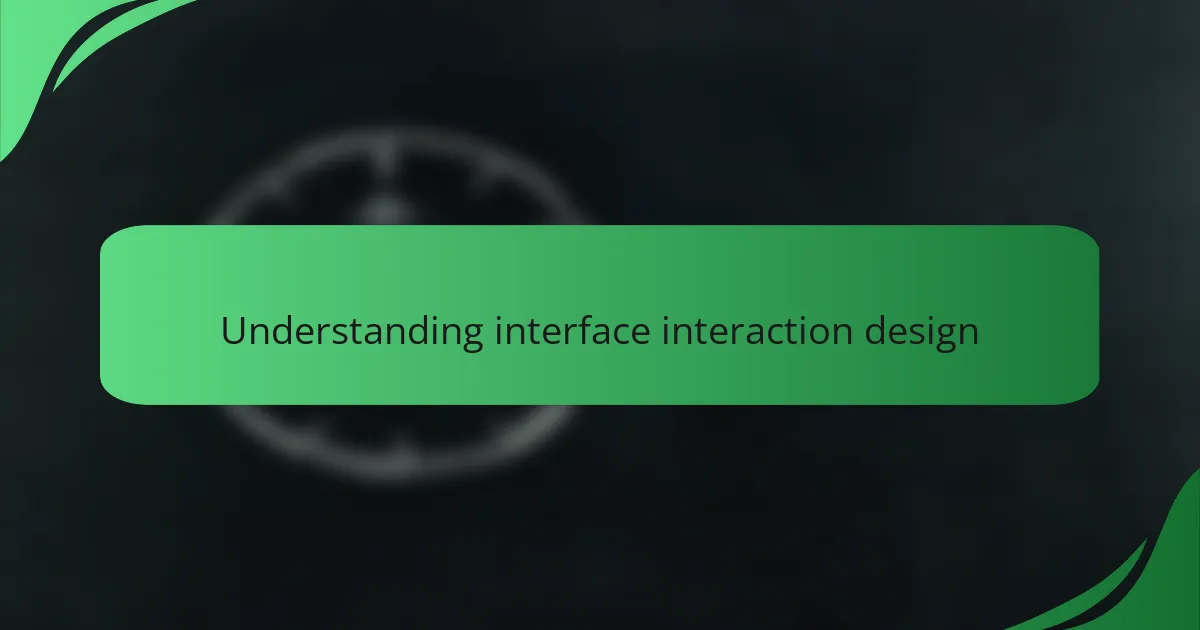
Understanding interface interaction design
Understanding interface interaction design is crucial for creating seamless user experiences. Throughout my career, I’ve learned that effective interaction design goes beyond aesthetics; it’s about understanding the users’ needs and how they will engage with the interface. This perspective has shaped my approach when collaborating with developers on GitHub, where feedback and iteration become fundamental to achieving a shared vision.
In my experience, a well-designed interface should:
- Make user tasks intuitive and efficient.
- Cater to diverse user behaviors and preferences.
- Provide clear feedback to users on their actions.
- Ensure accessibility for users with varying abilities.
- Foster an emotional connection between users and the interface.
These principles resonate deeply with me, as I’ve seen firsthand how they enhance user satisfaction and engagement.
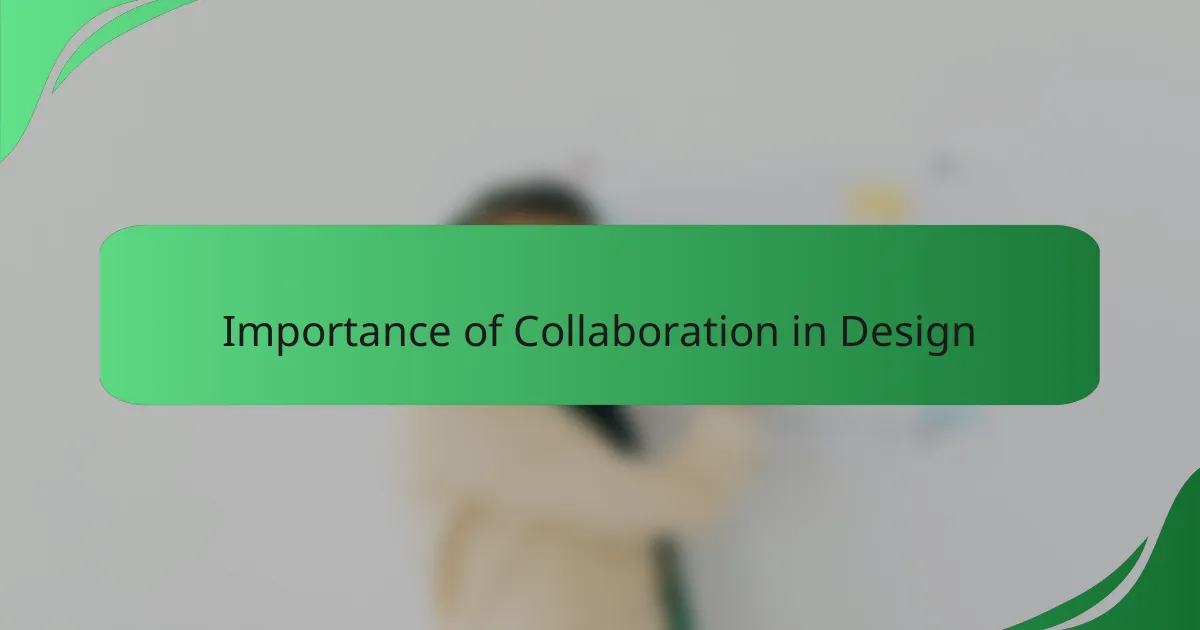
Importance of collaboration in design
Collaboration in design is crucial because it enhances creativity and fosters innovative solutions. I’ve often found that when I work with developers on GitHub, their unique perspectives bring fresh ideas that I might not have considered. This exchange of thoughts often leads to breakthrough moments, where the design evolves significantly beyond its initial concept.
Additionally, collaborating provides a sense of community and shared purpose that can be invigorating. When I’m deep into a project, the feedback and insights from my developer peers can transform my stress into motivation. It reminds me that we’re all working towards a common goal — creating something meaningful together.
- Diverse perspectives lead to richer design solutions.
- Collaboration enhances problem-solving efficiency.
- Continuous feedback helps refine ideas early on.
- A shared vision fosters a more cohesive and engaging final product.
- Emotional connection strengthens team dynamics and motivation.
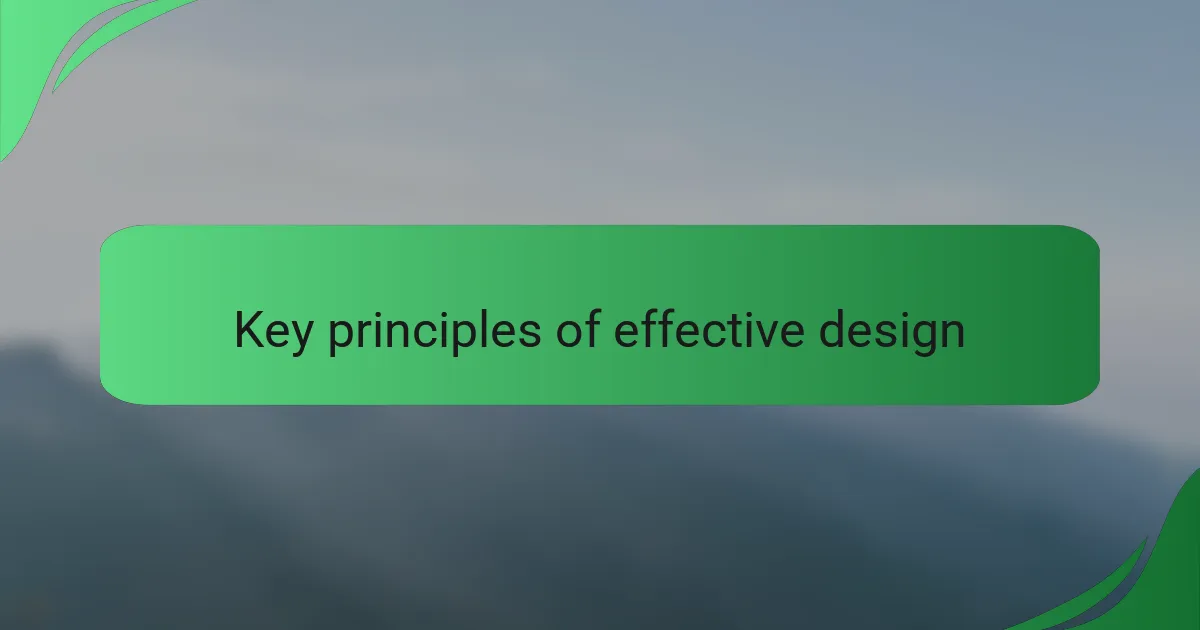
Key principles of effective design
Effective design hinges on a few key principles that can significantly enhance collaboration with developers. From my experience, consistency in design elements like color schemes and typography not only creates a harmonious interface but also simplifies the development process. I recall a project where sticking to a unified style guide helped eliminate confusion, enabling developers to focus more on functionality.
Another important aspect is user-centered design, which prioritizes the needs of the end-user. In a recent collaboration, we conducted user testing sessions that revealed critical insights, allowing us to adjust our approach to better meet user expectations. It’s fascinating how a few tweaks based on user feedback can make a world of difference in usability and satisfaction.
Lastly, clear communication is essential. I’ve learned that involving developers early in the design phase fosters a better understanding of the project goals, ensuring that both design and functionality align seamlessly. That synergy not only enhances the final product but also builds a strong working relationship with the development team.
| Principle | Description |
|---|---|
| Consistency | Uniform design elements to create harmony and clarity. |
| User-Centered Design | Focuses on the needs and preferences of the end-users. |
| Clear Communication | Early involvement of developers to align design and functionality. |
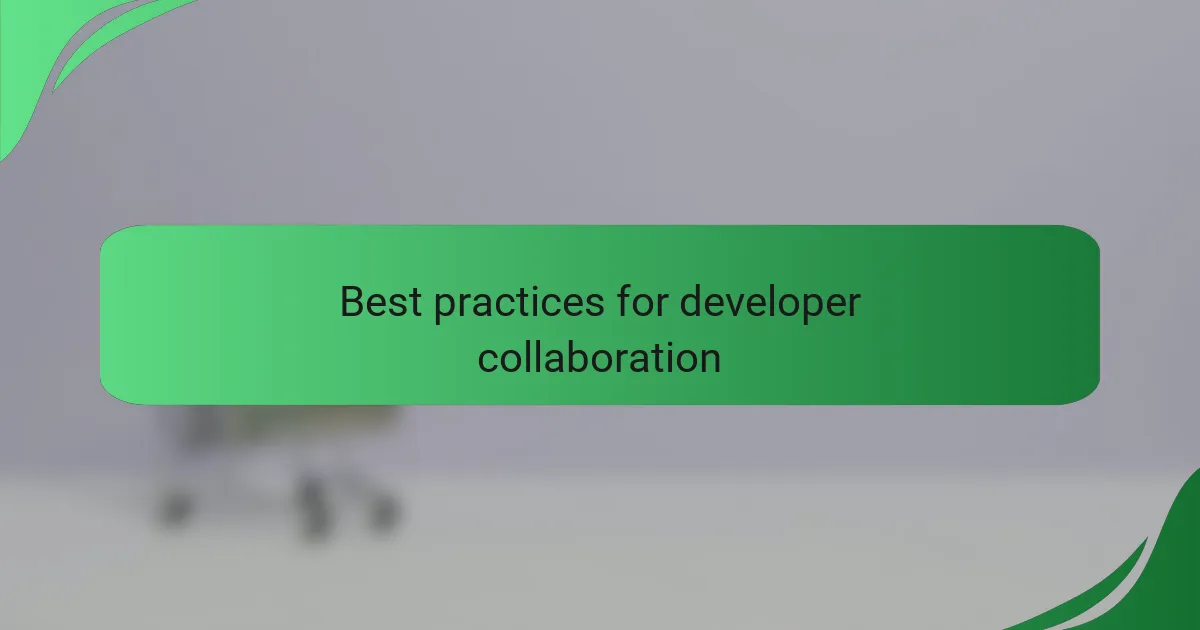
Best practices for developer collaboration
Collaborating with developers on projects can be immensely rewarding, but it requires a certain finesse to ensure smooth interactions. I’ve often found that establishing clear communication from the outset can make a world of difference. For example, sharing a concise project outline helps everyone understand their roles and goals, minimizing confusion and maximizing productivity.
Here are some best practices that I’ve learned from my experiences in collaboration:
- Set Clear Goals: Define the project objectives together to ensure alignment.
- Use Version Control Effectively: Utilize Git branching strategies to manage changes and avoid conflicts.
- Communicate Regularly: Schedule check-ins or use platforms like Slack to keep the conversation flowing.
- Seek Feedback Early: Encourage developers to share their insights early in the design process; their perspectives can greatly enhance the final product.
- Document Everything: Maintain comprehensive documentation for reference, which helps onboarding new team members and maintaining project continuity.
By following these practices, I’ve noticed an improvement in the quality of teamwork and overall project outcomes.
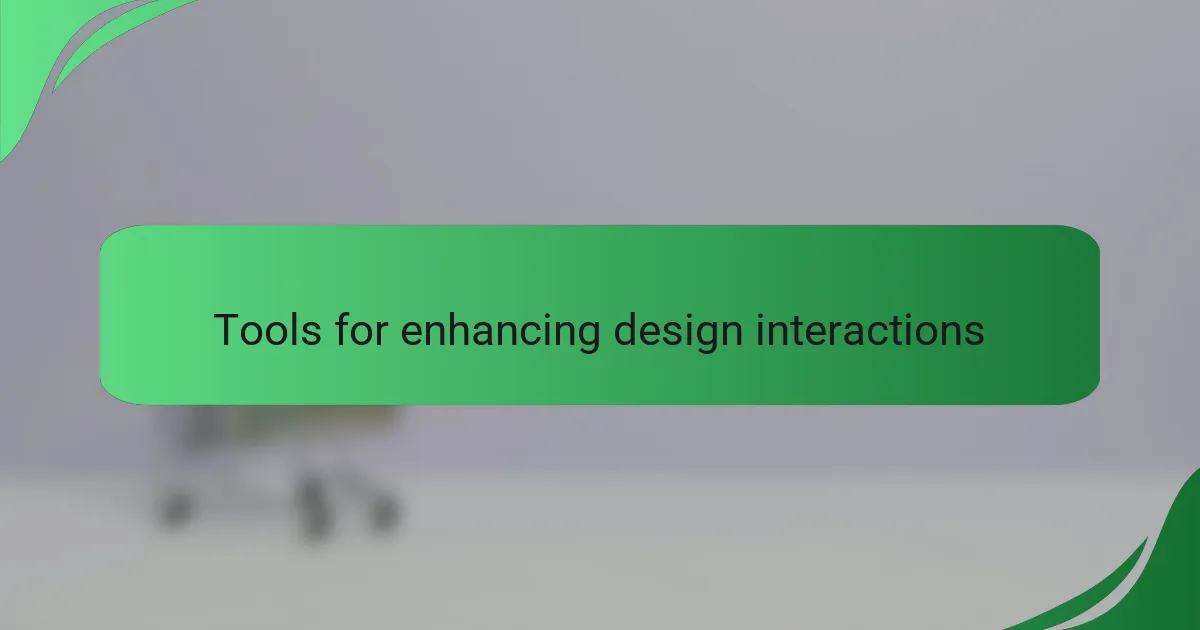
Tools for enhancing design interactions
When collaborating with developers on GitHub, I often rely on design tools that facilitate seamless interaction design. Tools like Figma and Adobe XD not only allow for rapid prototyping but also enable real-time collaboration. I remember a time when I worked on a project with a developer, and using Figma’s commenting feature made it effortless to discuss design tweaks without juggling multiple emails.
Another tool I find invaluable is Zeplin, which streamlines the handoff process by providing developers with everything they need, from style guides to assets, organized in one place. I felt a wave of relief when I first used it; it provided clarity on both ends of the design and development spectrum, significantly reducing misunderstandings.
Here’s how these tools stack up against each other:
| Tool | Key Feature |
|---|---|
| Figma | Real-time collaboration with commenting |
| Adobe XD | Prototyping with auto-animation |
| Zeplin | Organized design specs and asset handoff |
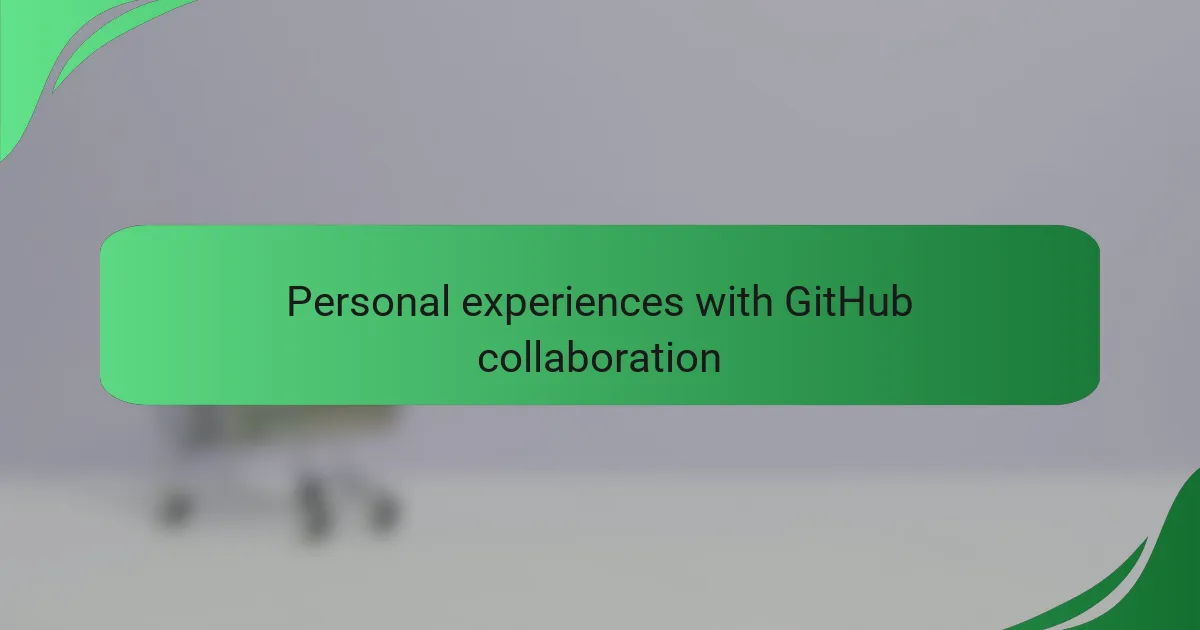
Personal experiences with GitHub collaboration
When I first started collaborating on GitHub, I was overwhelmed by the sheer amount of features and options available. Yet, as I navigated through issues and pull requests, I found it invigorating to see how developers approached problem-solving. Each contribution felt like a small victory for the project, and it was rewarding to witness my suggestions being integrated.
One of my most memorable experiences involved merging a feature that I initially thought would take weeks to complete. Thanks to the clear communication on GitHub, it took just a few days. I realized how crucial transparency and teamwork are in achieving shared goals in development.
Working with developers has also taught me to embrace feedback. In the beginning, I took critiques to heart, but I’ve learned to see them as opportunities for growth. Sharing ideas and adapting based on others’ input not only improves the project but enriches my own skills as a designer.
| Aspect | Design Perspective | Developer Perspective |
|---|---|---|
| Communication | Focus on user experience and aesthetic appeal. | Emphasis on functionality and code efficiency. |
| Feedback | Emotionally attached; views critiques as essential for growth. | Analytical; sees feedback as a means to enhance performance. |
| Project Goals | Aligns design elements with user needs and trends. | Prioritizes code quality, scalability, and technical debt. |


